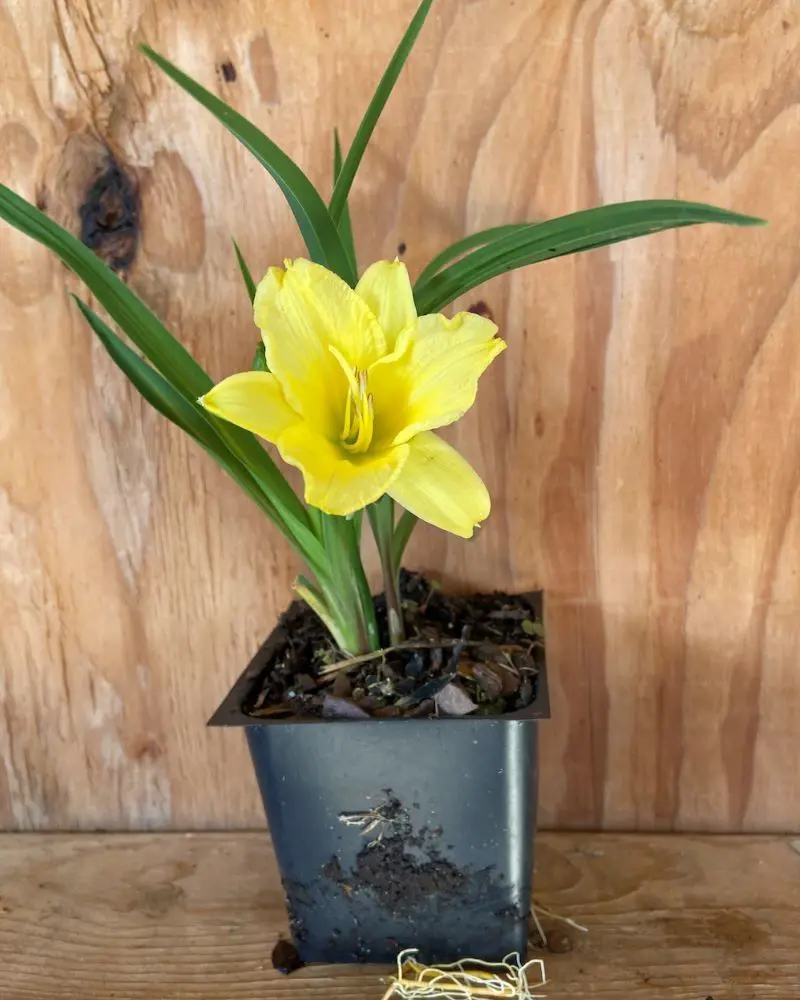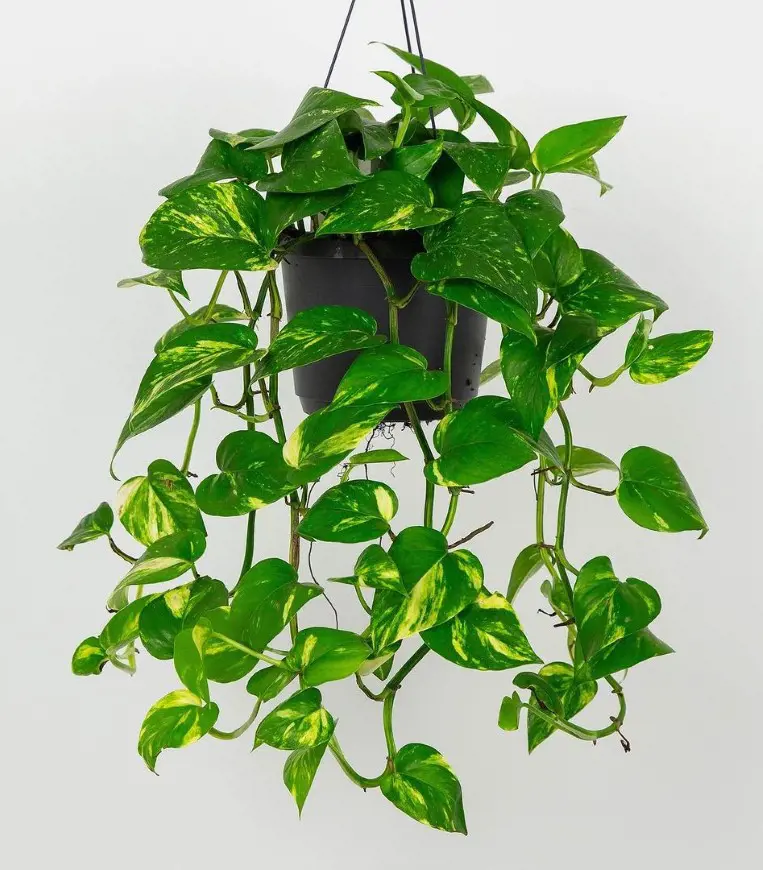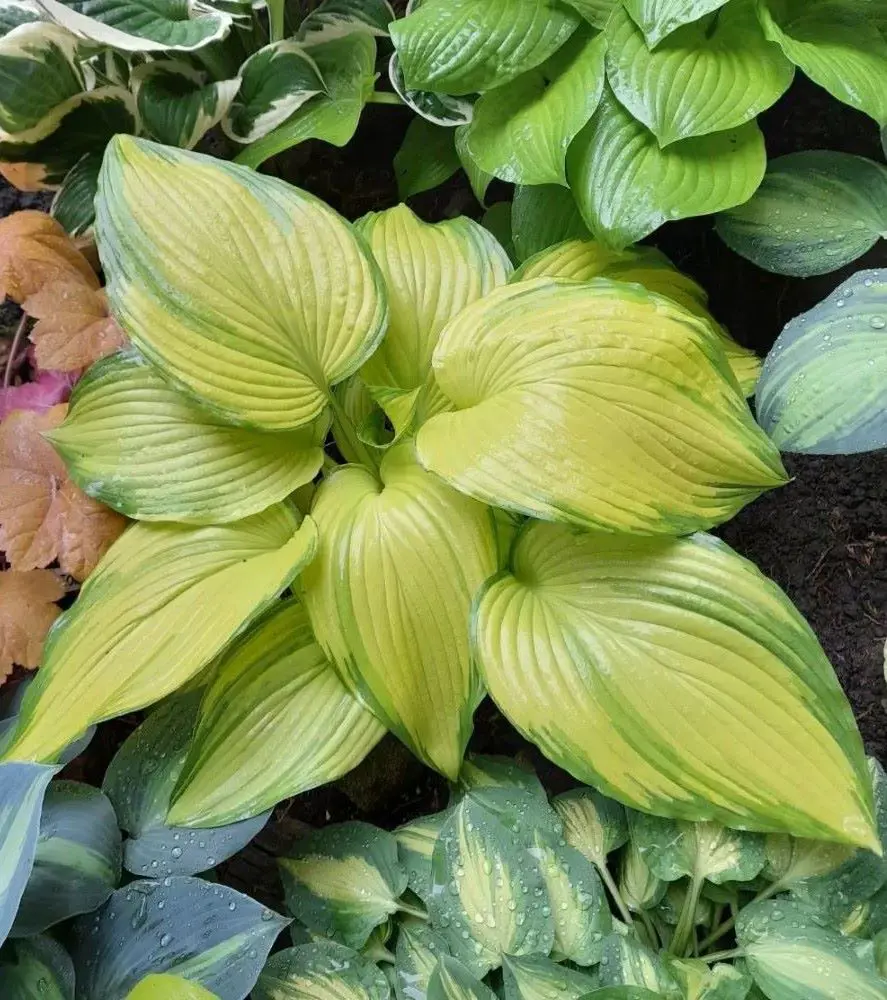How To Grow And Care For Daylily Flowers

This post may contain affiliate links. If you make a purchase through links on our site, we may earn a commission.
Daylilies produce stunning flowers that only bloom for one day, hence their name. The plant's prolific flowering habits and diverse array of colors makes it a invaluable member of any garden landscape.
With varieties ranging from miniature to towering, daylilies offer versatility in landscape design. These plants are also extremely easy to grow as they can survive in various soil types and climates. For optimal growth, plant daylilies in well-draining soil and provide ample sunlight.
Daylily Overview
| Scientific Name | Hemerocallis spp. |
| Common Names | Daylily, day lily |
| Family | Liliaceae |
| Type | Herbaceous perennial |
| Size | 6 in. to 5 ft. tall, 2-4 ft. wide |
| Sun Exposure | Full Sun |
| Soil Type | Deep fertile medium loamy soil |
| Soil pH | Acidic |
| Bloom Time | Spring to late summer |
| Colors | Red, orange, yellow, purple, pink |
| Hardiness Zones | 3-10, USA |
| Native Area | Asia and Central Europe |
| Toxicity | Toxic to cats |
What Are Daylilies?

The Daylily is a perennial flowering plant known for its stunning blooms that typically last for a single day, hence its name. However, each stem produces multiple flowers over the course of several weeks, ensuring a prolonged display. These flowers come in a wide array of colors, including vibrant shades of yellow, orange, pink, red, and even bi-color combinations.
Additionally, daylilies are characterized by their grass-like foliage and trumpet-shaped flowers. These flowers vary in size from smaller blooms around 2-3 inches in diameter to larger varieties reaching up to 6-8 inches across. Unlike a true lily, the daylily belong to a different botanical family and have distinct growth habits.
They are easy-to-grow, low-maintenance plants that thrive in well-drained soil and full sun. Also, daylilies make excellent companions for other perennials like coneflowers, rudbeckias, and ornamental grasses.
How To Grow Daylilies

Daylilies are generally easy to grow as they can thrive in various soil conditions and climates. However, they prefer well-drained soil and full sun.
Avoid over-watering as this can lead to root rot. Additionally, ensure adequate spacing between plants for air circulation to prevent fungal diseases. With minimal care, daylilies reward gardeners with vibrant blooms throughout the growing season.
When To Plant
Plant daylilies during their dormant season, typically in spring or early fall. Planting during these times allows the roots to establish before the onset of extreme weather conditions.
In cooler regions, planting in early fall provides the plants with ample time to settle in before winter. However, in warmer climates, spring planting is ideal to avoid stressing the plants with summer heat. Regardless of the season, ensure the soil is well-prepared with organic matter and adequate drainage to promote healthy growth and blooming.
Where To Plant

Daylilies grow best in spots that receive full sunlight to partial shade. Daylilies flourish in well-drained soil with a pH level between 6.0 and 7.0. Ensure the planting area has good air circulation to prevent fungal diseases.
Choose a location where the plants will have enough space to spread out as overcrowding can lead to reduced airflow and potential disease issues. Additionally, consider planting them in areas where they can be easily appreciated, such as along borders, in flower beds, or as part of mixed perennial gardens.
Depth, Support, And Spacing
When planting daylilies, ensure the crown (where the roots meet the foliage) is at soil level. Spacing should be about 18 to 24 inches apart to allow for proper air circulation and growth.
Daylilies generally don't require staking unless in particularly windy areas or with taller varieties, but it can be beneficial for aesthetic reasons. If staking, use bamboo stakes or similar supports. Periodically dividing clumps every few years maintains plant health and vigor. Overall, these considerations ensure optimal growth and a beautiful display of daylily blooms.
Planting Process

Follow these steps to plant daylilies in your backyard or home garden:
- Prepare the Soil: Work the soil to a depth of about 12 inches, incorporating organic matter like compost or aged manure to improve drainage and fertility.
- Dig Holes: Dig holes slightly wider and deeper than the root ball of the daylilies. Aim for a planting depth where the crown (where the roots meet the foliage) sits level with the soil surface.
- Planting: Place the daylily plant in the center of the hole and backfill with soil, gently firming it around the roots.
- Watering: Water thoroughly after planting to settle the soil around the roots. Keep the soil consistently moist but not waterlogged during the establishment period.
- Mulching: Apply a layer of organic mulch around the base of the plants to retain moisture, suppress weeds, and regulate soil temperature.
- Maintenance: Monitor the plants regularly, watering when necessary and removing any weeds that may emerge.
Grow Daylilies Indoor

Growing daylilies indoors requires careful consideration of their needs. Provide them with a sunny spot near a window and well-draining potting soil. Water them regularly, keeping the soil consistently moist but not waterlogged.
Indoor daylilies may benefit from occasional fertilization during the growing season. They generally require the same basic care as outdoor plants, with attention to their specific environmental requirements.
This summarized procedure will help you better understand the idea of growing daylilies indoors.
- Select a Suitable Container: Choose a container with drainage holes that is at least 12 inches in diameter to accommodate the daylily's root system.
- Choose the Right Soil: Use well-draining potting soil mixed with organic matter like compost to provide nutrients and improve drainage.
- Planting: Plant the daylily rhizome in the center of the container, ensuring the crown (where the roots meet the foliage) is at soil level. Backfill with soil and gently firm it around the roots.
- Placement: Place the container in a sunny location near a window where the daylily will receive at least 6 hours of sunlight per day. Alternatively, use grow lights to supplement natural light.
- Watering: Water the daylily thoroughly after planting to settle the soil, then water regularly to keep the soil consistently moist but not waterlogged. Check the soil moisture regularly, especially during hot or dry periods.
- Fertilizing: Fertilize the daylily with a balanced fertilizer diluted to half strength every 4-6 weeks during the growing season to promote healthy growth and blooming.
- Maintenance: Remove spent flowers and dead foliage regularly to encourage continuous blooming and prevent disease. Monitor for pests and treat as necessary.
How To Divide Daylily

Dividing daylilies involves separating clumps of plants into smaller sections and replanting them. This process helps rejuvenate crowded plants, promotes better airflow and sunlight penetration, prevents the spread of diseases, and stimulates new growth and blooming.
Dividing also allows gardeners to propagate their daylilies, creating more plants to expand their garden or share with others, ensuring the health and vitality of their daylily beds.
Here are some important tips to know as you start dividing the daylily:
- Divide daylilies in early spring or late summer/early fall when they are not actively blooming to minimize stress on the plants.
- Before dividing, prepare the new planting area with well-draining soil and amend with compost or aged manure for added nutrients.
- Water the daylilies thoroughly a day or two before dividing to ensure the soil is adequately moist.
- Use a shovel or garden fork to carefully lift the clump of daylilies from the ground, digging around the perimeter of the plant to loosen the roots.
- Gently tease apart the individual fans or sections of the daylily clump, taking care to preserve as many roots as possible.
- Trim back any damaged or overly long roots and foliage to reduce stress on the plant and encourage new growth.
- Plant the divided sections at the same depth as they were previously growing, spaced about 18-24 inches apart, and water them well after planting.
Daylily Care

Daylilies are renowned for their low-maintenance nature and tolerance to a range of soil conditions and climates. While they prefer regular watering and occasional fertilization for optimal growth and blooming, these flowers can withstand periods of neglect.
Their hardy nature allows them to thrive in various garden settings with minimal care, making them an ideal choice for busy gardeners or beginners.
Light
Daylilies grow best in full sunlight to partial shade, requiring at least 6 hours of direct sunlight daily. While they prefer full sun, they can resist shade to some extent, especially in hotter climates. Adequate sunlight ensures robust foliage and vibrant blooms.
Water
Daylilies require regular watering, especially during periods of drought or hot weather. Water deeply, providing about 1 inch of water per week, ensuring the soil remains consistently moist but not waterlogged.
Inadequate watering can lead to reduced blooming and stunted growth, while overwatering may cause root rot and fungal diseases. Monitor soil moisture regularly and adjust watering accordingly to maintain optimal conditions for healthy daylilies.
Soil

These flowers flourish in well-draining soil with a pH level between 6.0 and 7.0. They prefer loamy, fertile soil enriched with organic matter like compost or aged manure.
Good drainage is crucial to prevent waterlogging, which can lead to root rot. Additionally, the soil should be rich in nutrients such as nitrogen, phosphorus, and potassium to support healthy growth and prolific blooming of daylilies.
Temperature
Daylilies can survive in a wide range of temperatures but prefer moderate to warm conditions. These flowers perform best in climates where temperatures range from 60°F to 90°F (15°C to 32°C).
However, they can tolerate both hot summers and cold winters, making them adaptable to various regions. Extreme temperatures, especially frost, can damage daylilies, so provide protection during harsh weather conditions.
Humidity
Daylilies generally prefer moderate humidity levels but can resist a wide range of humidity conditions. They thrive in average garden humidity levels, typically between 40% to 60%.
While these plants can endure periods of higher or lower humidity, excessive moisture can increase the risk of fungal diseases. Adequate air circulation and well-drained soil help mitigate humidity-related issues in daylilies.
Fertilization

This lily variety benefits from regular fertilization to support healthy growth and blooming. Use a balanced fertilizer with equal ratios of nitrogen, phosphorus, and potassium, or a fertilizer specifically formulated for flowering plants.
Apply the fertilizer in early spring as new growth emerges, following package instructions for dosage. Repeat application every 4-6 weeks during the growing season. Avoid excessive fertilization as it can lead to foliage growth at the expense of blooming.
Winter Care

Caring for daylilies in winter is essential for their health and resilience. Begin by cutting back the foliage to about 4 inches above the ground after the first frost, removing any dead or diseased material.
Mulch around the base of the plants with a layer of organic material, such as straw or compost, to insulate the roots and protect them from freezing temperatures. Then, water the plants deeply before the ground freezes to provide ample moisture for the winter months.
In regions with harsh winters, consider covering the plants with a layer of burlap or a frost blanket to shield them from extreme cold and wind. Lastly, monitor the plants throughout the winter, especially after heavy snowfalls or freezing rain. Gently brush off any accumulated snow to prevent damage to the foliage. With proper care, daylilies can survive winter and thrive again in the spring.
Daylily Types

Daylily is a diverse plant with more than 89 thousand types. Also, there are over 50 thousand hybrid variety of this plant. Different varieties of daylilies exhibit variations in flower color, size, shape, and bloom time.
Common types include the classic Stella de Oro with its golden-yellow blooms and the robust Hemerocallis fulva, known for its orange flowers. Some varieties boast double blooms or unique color patterns, while others may have contrasting throats or ruffled edges. Additionally, daylilies vary in height, foliage texture, and overall plant habit, offering a diverse array of options for gardeners.
1. Stella de Oro (Hemerocallis 'Stella de Oro')
One of the most popular daylilies, Stella de Oro features abundant golden-yellow blooms throughout the summer. This compact variety stands at around 12-18 inches tall; they are making it ideal for borders, containers, or mass plantings.
Oro's flowers are trumpet-shaped and slightly fragrant, attracting pollinators. This daylily variety is primarily known for its long blooming period and low maintenance requirements.
2. Happy Returns (Hemerocallis 'Happy Returns')

This reblooming daylily is cherished for its cheerful lemon-yellow flowers and extended bloom season, often from late spring to fall. Happy Returns typically reaches a height of 18-24 inches and forms dense clumps of grass-like foliage. Its trumpet-shaped blossoms open during the day and close in the evening, providing continuous color and attracting butterflies and hummingbirds to the garden.
3. Pardon Me (Hemerocallis 'Pardon Me')
With stunning cranberry-red flowers accented by a contrasting yellow throat, Pardon Me adds a bold pop of color to any landscape. It's prized for its compact habit and extended blooming period, making it a standout choice for borders or mass plantings.
4. Purple de Oro (Hemerocallis 'Purple de Oro')

This variety sports rich purple blooms with a golden-yellow throat. It is ideal for growing in garden beds or borders.
Additionally, its sturdy stems and long-lasting flowers make it a reliable performer. Meanwhile, its adaptable nature ensures success in a range of growing conditions.
5. Chicago Apache (Hemerocallis 'Chicago Apache')
The Chicago Apache variety is renowned for its dramatic red flowers with ruffled edges. This vigorous cultivar boasts sturdy scapes and prolific blooms, making it an excellent choice for creating focal points or adding bold splashes of color to landscape designs.
Common Pests And Diseases

Daylilies are generally healthy plants but can be susceptible to pests like aphids, thrips, and spider mites. These pests are known to cause damage to leaves and flowers.
Likewise, the daylily can also fall prey to diseases such as rust, crown rot, and leaf streak, especially in humid conditions. Proper cultural practices and regular inspection help manage these issues effectively.
Aphids
Aphid infestations in daylilies can cause significant damage, including distorted growth, yellowing leaves, and reduced flowering.
Solution: Try spraying the affected plants with a strong stream of water to dislodge them. Alternatively, apply insecticidal soap or neem oil, focusing on the undersides of leaves where aphids often congregate. Encouraging natural predators like ladybugs can also help keep aphid populations in check.
Thrips

Thrips are tiny, slender insects that feed on plant sap, including daylilies. Their damage manifests as distorted or discolored foliage, stunted growth, and reduced flower quality.
Solution: Regularly inspect plants for signs of damage and treat affected areas with insecticidal soap or neem oil. Pruning and removing heavily infested plant parts can also help control thrips populations. Additionally, introducing predatory insects like lacewings can provide natural control of thrips.
Rust
Rust disease in daylilies is caused by fungal pathogens that manifest as orange to rusty-brown spots on leaves. It thrives in humid conditions.
Treatment: Remove infected foliage, improve air circulation, and avoid overhead watering. Apply fungicides containing chlorothalonil or myclobutanil preventatively, following label instructions. Proper sanitation and spacing between plants help prevent the spread of rust in daylily beds.

Crown Rot
Crown rot is a fungal disease affecting daylilies. It is primarily caused by excessive moisture in the soil, poor drainage, or planting too deeply. Symptoms include wilting, yellowing, and rotting of the crown at the base of the plant.
Treatment: Improve soil drainage, avoid overwatering, and ensure proper planting depth. Remove affected plant parts, apply fungicides containing thiophanate-methyl, and transplant affected plants to well-draining soil to prevent further spread.
Recent posts
Plant Care
Plant Care
How To Take Care Of An Orchid Plant? 11 Tips And Tricks
If you love gorgeous orchids but are worried they're too high-maintenance, don't worry. This guide is like a cheat sheet for orchid newbies. Forget fancy words and confusing schedules — we're talking about how to take care of an orchid pla...
Plant Care
How To Grow and Care For Peace Lily Plant
The Peace Lily is an indoor plant that is most valued for its beautiful and shiny green leaves as well as the white blooms. Hard and tolerant, it’s naturally a low-maintenance addition to your plant collection. If you are confused, let us tell ...
Plant Care
Pothos Plant Care And Growing Guide
Adding a Pothos plant (Devil’s Ivy) to your home benefits the environment and aesthetic of your personal space. It's easy to maintain and is loved for it's ability to enhance indoor air quality by removing toxins like formaldehyde, benzene, and...
Plant Care
Snake Plant Care and Growing Guide
Snake plants require low maintenance, and low light and are almost impossible to kill, making them a perfect plant for beginners and seasoned gardeners. In this guide, we will explore essential care tips and optimal growing conditions for snake plant...
Plant Care
How To Plant, Grow and Care Majesty Palm
The majestic palm, scientifically known as Ravenea rivularis, makes for a stunning indoor tree with its lush and grand fronds. Originating from Madagascar's river banks, this resilient houseplant is cherished not only for its beauty but also for its ...
Plant Care
How To Grow And Care For A Hosta Plant
Hosta plants are widespread perennials, often grown for their beautiful and diverse foliage. They are extremely easy to care for and can thrive in various conditions, particularly shade or semi-shade. These hardy plants can last for many years and re...







